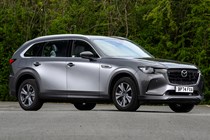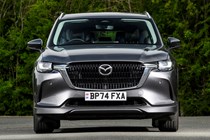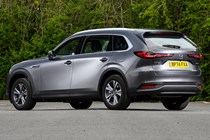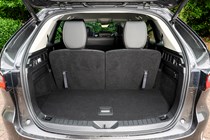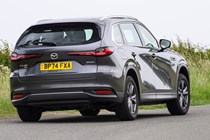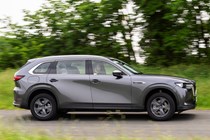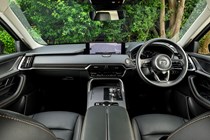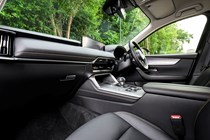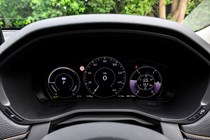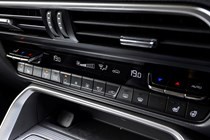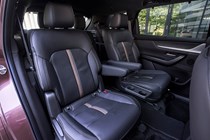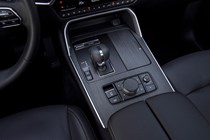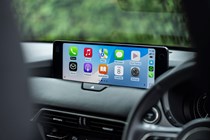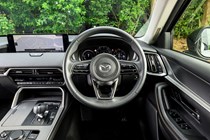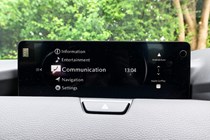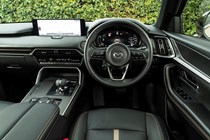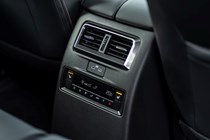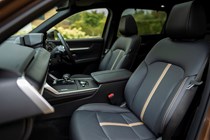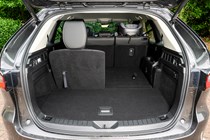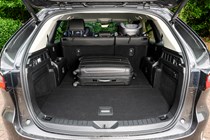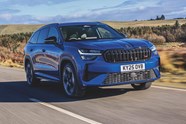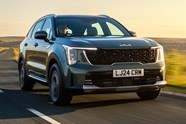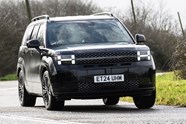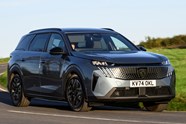
Mazda CX-80 review: diesel delight, hybrid hiccup
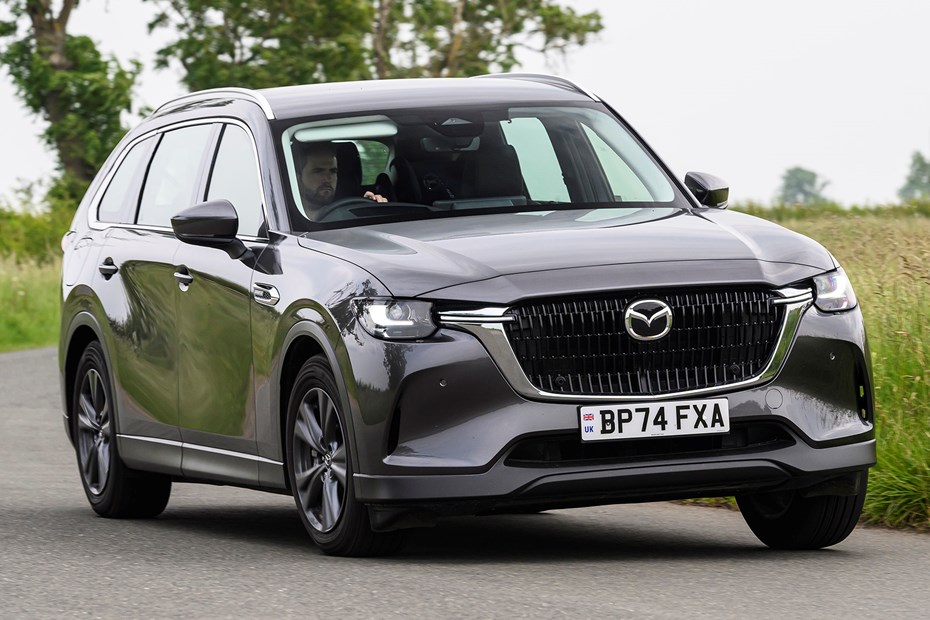
At a glance
| Price new | £50,080 - £60,895 |
|---|---|
| Used prices | £34,340 - £48,950 |
| Road tax cost | £195 - £620 |
| Insurance group | 37 - 39 |
Get an insurance quote with

|
|
| Fuel economy | 48.7 - 49.6 mpg |
| Miles per pound | 6.2 - 6.3 |
| Number of doors | 5 |
| View full specs for a specific version | |
Available fuel types
Diesel
Hybrid
Pros & cons
- Flexible seating layout
- Smart cabin design
- Smooth diesel engine
- Unrefined hybrid option
- Smallish boot
- Patchy interior plastics
Mazda CX-80 SUV rivals
Overview
Should you buy a Mazda CX-80?
Yes, if you’re looking for a spacious seven-seat SUV, the CX-80 is certainly worth a look. It’s a welcome addition to this class, bringing impressive – and surprising – levels of spaciousness with a well-packaged interior that will work well for families. It also feels suitably premium inside, without the upscale price of its prestigious German and Swedish rivals.
It’s a stylish, desirable and well-finished SUV too, and though it’s not as radical inside or out as a Hyundai Santa Fe, for example, we can see its more traditional focus inside and out winning over buyers. It’s only the plug-in hybrid model that we struggle to recommend because of its unrefined nature, but the diesel is recommended, especially if you need to tow.
What’s new?
Mazda has had most of the family SUV market covered off for a while, but until 2024 a big seven-seater was absent from the range. That all changed with the introduction of the CX-80 – Mazda’s new de-facto flagship SUV model with the most interior space of any in the lineup and the capacity to carry seven in comfort.
The CX-80 might look familiar, and that’s because it’s based on the CX-60 SUV. That car was introduced in 2022 to take the company more upmarket and challenge cars such as the BMW X3 and Audi Q5. Both the CX-60 and 80 use Mazda’s ‘large car’ platform that underpins even bigger SUVs sold elsewhere in the world. This one is essentially the front half of a 60, and incorporating a stretched wheelbase to squeeze in a third row of seats.
At just shy of five metres, this new Mazda is a big SUV and longer than many of its rivals – the Skoda Kodiaq, Hyundai Santa Fe and Kia Sorento are slightly smaller in terms of outright dimensions. It’s even longer than a Land Rover Discovery. A large part of its length is, however, taken up by a huge bonnet, which is needed to accommodate its quite significantly-sized engines. The first is a 2.5-litre plug-in hybrid and the second a 3.3-litre straight-six diesel engine. The latter is quite a rarity these days when many of its rivals are now only available as some sort of hybrid.
The diesel and PHEV CX-80 is available with a wide range of trim levels, with the plug-in hybrid actually working out cheaper than the diesel. Standard equipment is very generous, with the entry-level Exclusive Line model shipping with heated leather seats, an electric release boot, keyless entry, and a head-up display.
It also comes with a range of driver assistance technology such as blind spot monitoring and vehicle exit monitor that aims to stop you opening the door into passing traffic. This entry trim is expected to be the most popular, and we can’t say we’re surprised considering how many features you get included.
The Homura grade adds 20-inch black alloy wheels and painted wheelarch trims, along with electric front seats and a Bose sound system. Homura Plus then brings a 360-degree camera, panoramic sunroof and adaptive LED headlights. The Takumi heads up the range, with more high-end features such as its machined 20-inch alloy wheels, white Nappa leather seats and white wood trim. The Takumi Plus grade then adds all of the extra features of the Homura Plus model.
The CX-80 comes out punching as a genuinely interesting seven-seater that’s good to drive and with a particularly nice interior. But is that enough to see off its established rivals? Our verdict can be found on the next page.
If you’re looking for a large seven-seater SUV with a swish interior and diesel power, this could be the car for you. As always, we test our cars thoroughly and over time – and we’ll update this review as we spend more time behind the wheel during our extended long-term test. Find out more about how we test cars here.And don’t forget, you can find out all about how we test cars on our dedicated explainer page. Here’s why you should trust us, too.



